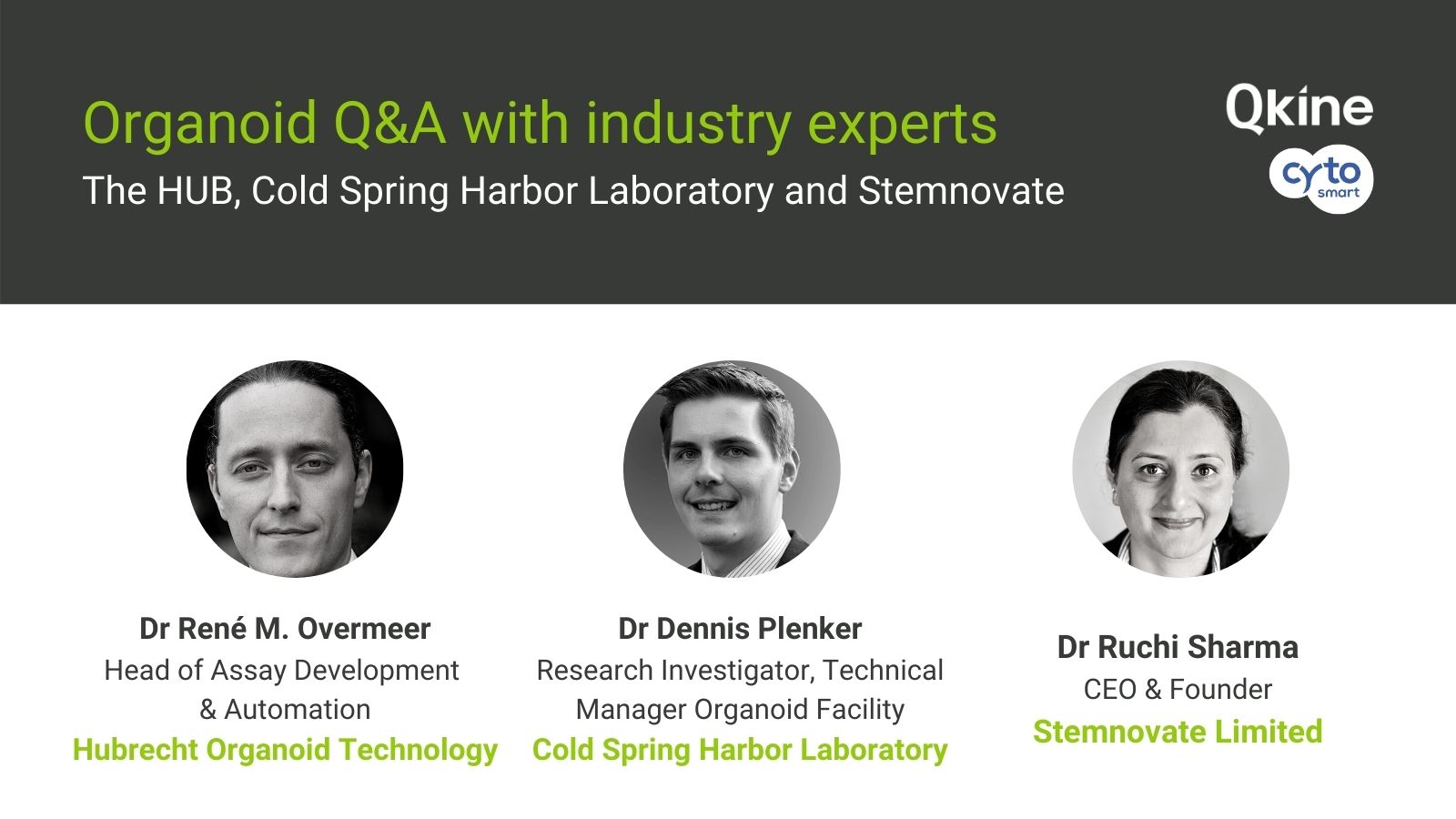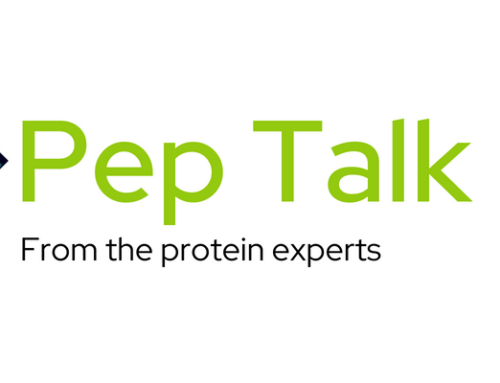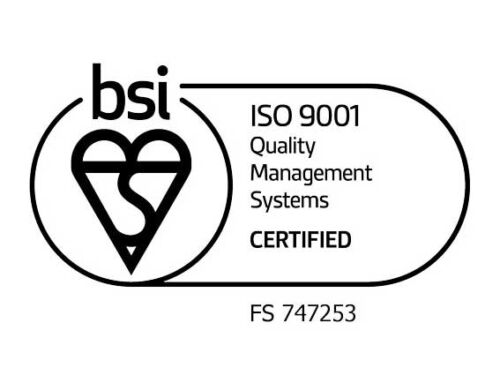Organoid Q&A with industry experts from the HUB, CSHL and Stemnovate

We recently held a webinar with CytoSMART and organoid pioneers from Cold Spring Harbor Laboratory, Stemnovate and the Hubrecht Organoid Technology titled: what’s needed to realize the potential of organoids?
Following presentations from our speakers, we held an insightful Q&A session to address key challenges and questions from the audience. In this blog post, we’re sharing our top three questions from this open and collaborative discussion.
Interested in watching the full webinar?
View the on-demand recording here.
Question 1: Where can you obtain organoids? Is it best to make them yourselves or can you purchase them?
Dr. Dennis Plenker (Cold Spring Harbor Laboratory): As part of an NIH-funded project with ATCC and other large research institutes around the world, we’re building a biorepository of well-characterised organoids including sequencing and clinical data, as well as a 6-month follow-up. This is probably the easiest resource of organoids at the moment.
Dr. René M. Overmeer (Hubrecht Organoid Technology): At the HUB we’re also participating in the NIH project. One of the main reasons for us wanting to join this collaboration was because of the long time scales and ethical regulations associated with collecting all the necessary patient consents. The ATCC is set up in such a way that is makes this much easier so we’re contributing to this biobank to help researchers to easily access organoids, as well as adding other models to our own repository.
Dr. Ruchi Sharma (Stemnovate): We have all the necessary licences and informed consent for all our lines and samples, so are able to provide them directly to people via our website.
Question 2: Do you have any insight into which growth factors can have a big impact on organoid cultures?
Rob Nixon (Qkine): We need to be producing growth factors in an animal-free way, for example our TGF-β1, to help with the scale-up and translation of stem cell and organoid applications from bench to clinic. As Dennis discussed earlier, R-spondin 1 is another important organoid growth factor and we need to take away those key differences and heterogeneity that we see between growth factor batches and help to standardise organoid culture media. We already have a more reliable, optimised version of R-spondin 1 in our portfolio to offer customers. I think the other big area is Wnt3a, which is a very complex signalling story, so we need to bring a higher purity, more reliable version of this key growth factor to the market.
Dr. Ruchi Sharma (Stemnovate): Growth factors have a huge role to play because you can see variability and differentiation starting to happen in your processes. As you often run assays over several months, it’s important to have consistency in your growth factor batches and a good production process.
Dr. René M. Overmeer (Hubrecht Organoid Technology): The growth factor space is something that has been developing a lot recently particularly being able to get good growth factors. When we started working with organoids, we had to make everything ourselves and therefore it was a huge time investment for anyone wanting to work with organoids. The wider availability of organoid growth factors is enabling smaller labs to start doing organoid experiments.
Question 3: How does organoid size affect the outcome of assays? Is it important to always use a similar size to ensure reproducibility or does the size not matter?
Dr. René M. Overmeer (Hubrecht Organoid Technology): It really depends on the question you are asking. If you take a dense tumour organoid and you test a compound on a large organoid, then the outer cells will start dying before the inner cells. However, the same might not be the case in a smaller organoid – so in this instance, yes size does matter for reproducibility. The total proliferation can also be lower if you have very large organoids compared to very large compact organoids. But if you’re talking about cystic organoids then the size is a lot less important.
Dr. Ruchi Sharma (Stemnovate): There are a lot of studies looking into the impact of variable diffusion within organoids. You need to homogenise cultures and make sure that over a period of time you have reproducibility that you can control – you can’t have complete control over the size, but there should be some threshold that you come up with.
Dr. Dennis Plenker (Cold Spring Harbor Laboratory): If you’re doing an image-based assay and you just want to see morphological changes then size is important to a certain extent. However, if you’re doing a drug screen and you want a homogeneous seeding density, then you need a homogeneous cell solution to achieve this.
Enjoyed reading our top three questions from the recent organoids webinar Q&A session?
Download our Q&A session handout to read the full discussion.




